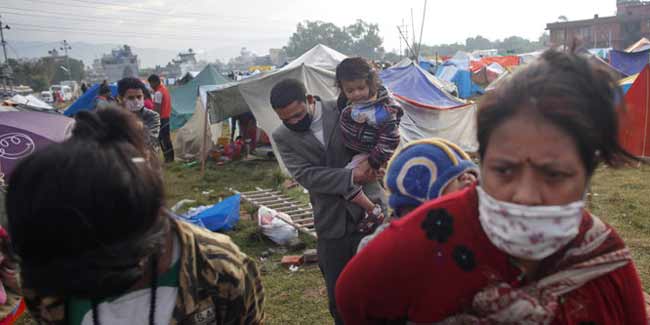
Almost after a week after the catastrophe hit Nepal, life has started crawling back to normal. After a week long wait, as the residents gather courage and take shelter in their broken houses, they realize that broken bones or scarred bodies are not their only health concern.
While help pours in swiftly from various nations, there are several challenges that relief workers and healthcare facilities are at the forefront of. The trouble is not really over for Nepal earthquake survivors because there are several health challenges which they face now.
Table of Content:-

Hospitals have Crossed their Capacity
According to the UN reports, hospitals in areas like Ramechhap, Nuwakot and Sindhupalchowk are damaged. In Kathmandu, where most of the hospitals are functioning, the facilities are overloaded. Many survivors are receiving treatment on the streets and supplying medical facilities and health care facilities to every corner is a critical job.
Vaccination Initiatives are Late
The vaccination initiatives for communicable diseases, like measles, take a back seat when a disaster strikes an area. But this leaves the population exposed to outbreak.
Lack of Transportation
Nepal has a wide area spread in small villages and communities, which have transportation obstacles. Many of these areas may only be accessed on foot and after the massive destruction, reaching such areas has got even more troublesome.

Survivors are in the Open
The earthquake caused massive destruction to houses and shelters. This has left many people shelter-less. Most survivors can be found sleeping in the open, being exposed to health risks from various elements like the poor weather.
Lack of Clean Water and Hygiene
Getting hands on basic amenities is quite a task when there remains no question of maintaining hygienic surroundings. This puts the area under the risk of epidemics. Scarcity of clean water and hygiene can give birth to water-borne diseases like cholera.
Image source: indianexpress.com/rte.ie
Read more Health News.
Read Next
Insomnia Lowers Pain Tolerance
How we keep this article up to date:
We work with experts and keep a close eye on the latest in health and wellness. Whenever there is a new research or helpful information, we update our articles with accurate and useful advice.
Current Version